Dirty Harry
8.2 /10 1 Votes
95% Rotten Tomatoes Film series Dirty Harry Duration Language English | 7.8/10 IMDb 3/4 Roger Ebert Genre Action, Crime, Thriller Country United States | |||||||||||||||||||||||||||||||||
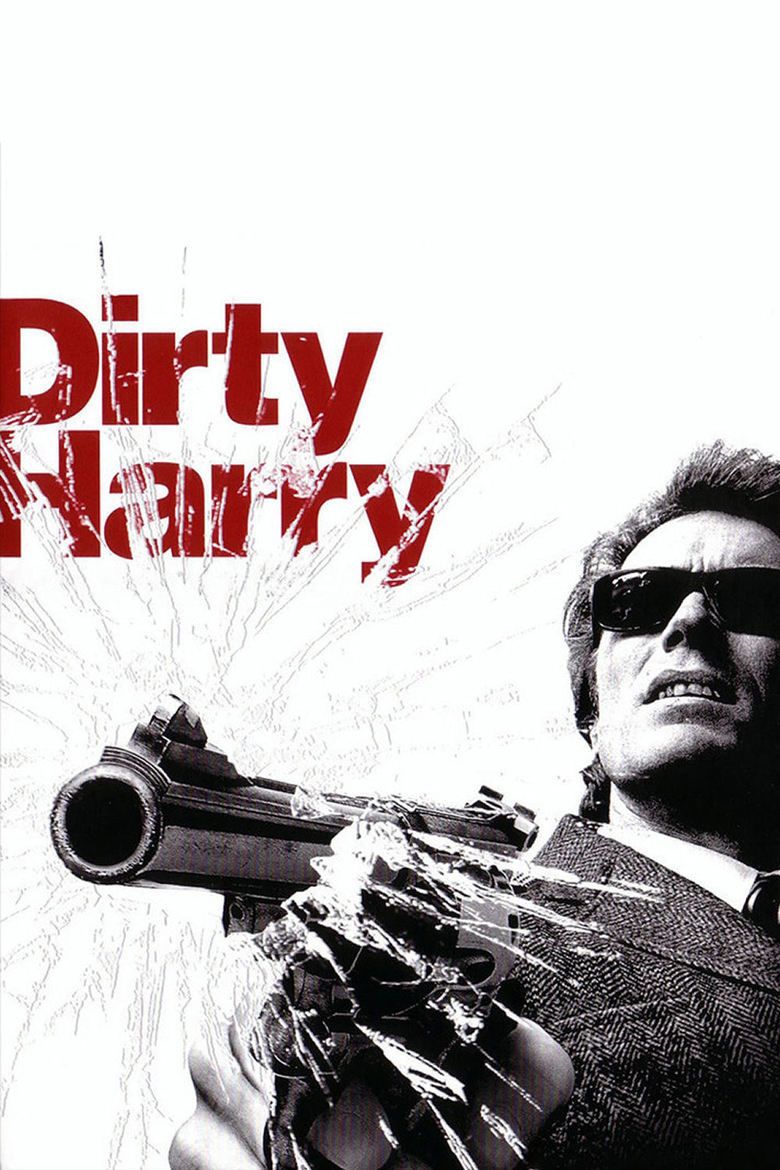 | ||||||||||||||||||||||||||||||||||
Release date December 23, 1971 (1971-12-23) Writer Harry Julian Fink (screenplay), Rita M. Fink (screenplay), Dean Riesner (screenplay), Harry Julian Fink (story), Rita M. Fink (story) Cast (Insp. Harry Callahan), Andrew Robinson (Scorpio Killer), (The mayor), (Insp. Chico Gonzalez), (Lt. Al Bressler), (Insp. Frank DiGiorgio)Similar movies Blackhat , Halloween , Salt , Untraceable , The Secret in Their Eyes , I Spit on Your Grave III: Vengeance is Mine Tagline Detective Harry Callahan. He doesn't break murder cases. He smashes them. | ||||||||||||||||||||||||||||||||||
Dirty Harry is a 1971 American action crime thriller film produced and directed by Don Siegel, the first in the Dirty Harry series. Clint Eastwood plays the title role, in his first outing as San Francisco Police Department (SFPD) Inspector "Dirty" Harry Callahan. The film drew upon the actual case of the Zodiac Killer as the Callahan character seeks out a similar vicious psychopath.
Contents
- Dirty harry 10 10 movie clip do l feel lucky 1971 hd
- Plot
- Cast
- Development
- Principal photography
- Filming locations
- Music
- Critical reception
- Box office performance
- Home media
- Legacy
- Real life copycat crime and killers
- Influence
- References
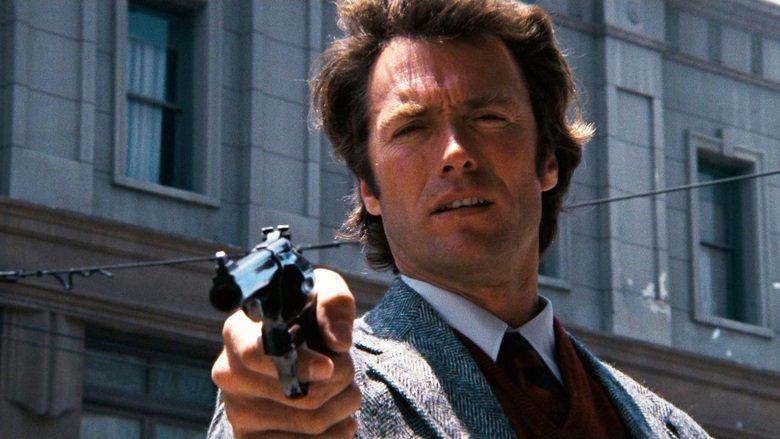
Dirty Harry was a critical and commercial success and set the style for a whole genre of police films. It was followed by four sequels: Magnum Force in 1973, The Enforcer in 1976, Sudden Impact in 1983 (directed by Eastwood himself) and The Dead Pool in 1988.
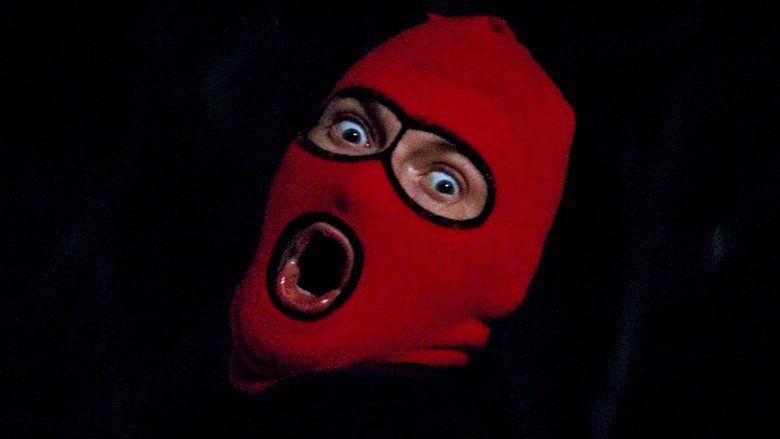
In 2012, the film was selected for preservation in the National Film Registry by the Library of Congress for being "culturally, historically, and aesthetically significant".

Dirty harry 10 10 movie clip do l feel lucky 1971 hd
Plot

A mysterious killer (Andy Robinson) uses a high precision rifle to kill a girl in a hotel rooftop swimming pool. Police arrive at the crime scene, where SFPD Inspector Harry Callahan (Clint Eastwood) finds a blackmail note signed "Scorpio" ordering the city to pay $100,000 or the culprit will continue to kill. The mayor (John Vernon) asks police officers what is being done to track the killer.

During lunch, Inspector Callahan foils a bank robbery. He kills two of the robbers and wounds a third. Confronting the wounded robber, Callahan delivers the film's iconic line.

I know what you’re thinking: 'Did he fire six shots or only five?' Well, to tell you the truth, in all this excitement, I’ve kinda lost track myself. But being this is a .44 Magnum, the most powerful handgun in the world, and would blow your head clean off, you’ve got to ask yourself one question: 'Do I feel lucky?' Well, do you, punk?
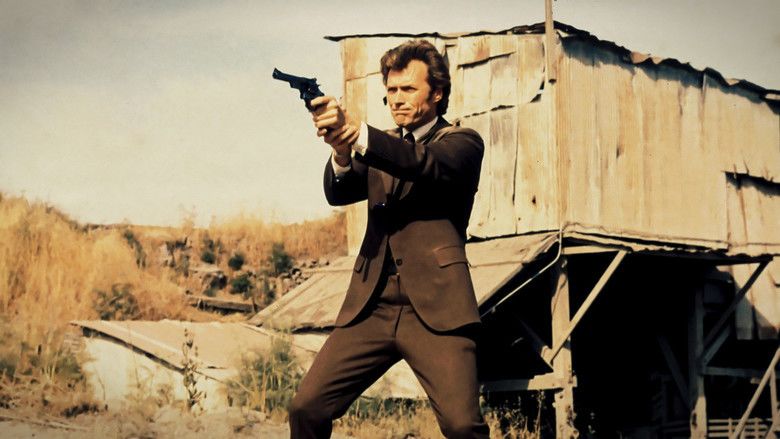
After the robber surrenders, he tells Callahan that he must know if the gun was still loaded. Callahan pulls the trigger with the weapon pointed directly at the robber, and laughs as it is revealed to be empty.
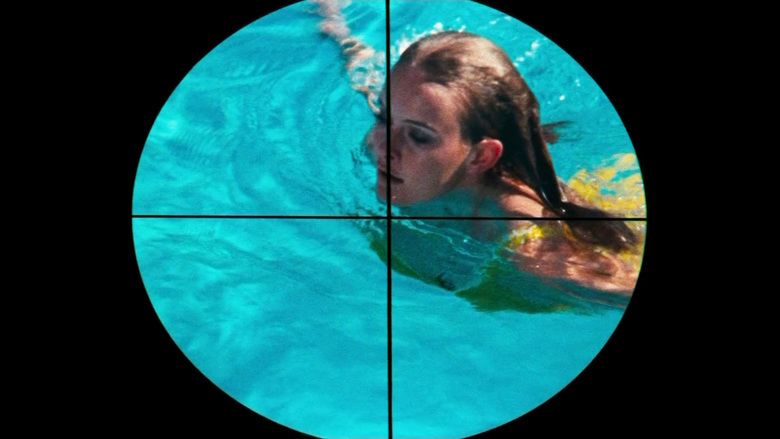
Callahan is now wounded and spends brief Time at the hospital, but continues on the case. He is assigned a new police partner, Chico Gonzalez (Reni Santoni), whom he believes to be an inexperienced rookie. Scorpio is staking out potential victims near a public park, but is seen from a police helicopter and runs away. Callahan and his new partner believe they see him that night on the streets, but in the course of tracing him to his home, Callahan looks into a window and briefly watches a sexual encounter before being caught by neighbors who try to beat him up as a peeping Tom, until Chico interferes.
Based on Scorpio's communications, the city decides he will next try to kill a Catholic priest. They set up a stake-out, and set Callahan and Gonzalez on another rooftop from which they can see the building from which they believe Scorpio will strike. Callahan gets again distracted watching a sexual encounter. Scorpio arrives and there is a shootout, in which a policeman disguised as a priest is killed.
Scorpio delivers a second ransom demand to the police, stating he has now kidnapped a teenage girl who he says will die if his demands are not met. Callahan is assigned to deliver a case full of money. He waits near a pier as directed by Scorpio who calls Callahan on a nearby pay phone, giving him instructions to go to another location in the city with another payphone, where he will call again. During his trip through the city, Callahan is confronted by would-be robbers and a young man seeking gay sex. He encounters Scorpio under the Mount Davidson cross. Gonzalez has been following them and there is a shootout between his partner and Scorpio, in which the former is wounded. Scorpio escapes without the money and reports to a hospital.
The police learn of Scorpio's hospital visit, and a doctor recalls having met Scorpio previously and remembers he lives in a room at Kezar Stadium where he also works. Callahan finds Scorpio there. In a chase across the stadium field, Callahan first shoots Scorpio, and then tortures him by standing on his wounded leg demanding to know where the girl is being held. The girl is later found dead in this location.
The district attorney (Josef Sommer) tells Callahan that Scorpio's rights have been violated, and they cannot hold him, but must let him go. Callahan continues to shadow Scorpio on his own time. Scorpio pays a man $200 to beat him severely, then reports to a hospital claiming he is a victim of police brutality. Harry's new partner decides to quit the police force.
Scorpio robs a liquor store and acquires new money. He then hijacks a school bus and contacts the police with yet another ransom demand for money and a flight out of the Santa Rosa airport. Callahan manages to jump onto the roof of the hijacked bus from an overpass. After Callahan forces Scorpio off the bus, the latter flees to a nearby quarry at which they engage in a gun battle. At the climax, Callahan reprises his line "this is a .44 Magnum, the most powerful handgun in the world, and would blow your head clean off, you’ve got to ask yourself one question: 'Do I feel lucky?' Well, do you, punk?" Unlike the earlier encounter, Callahan does have one remaining bullet with which he kills Scorpio, when the latter holds a small boy at gunpoint. Callahan takes out his inspector's badge and throws it into the water before walking away.
Cast
Development
The script, titled Dead Right, was originally written by Harry Julian and Rita M. Fink, a story about a hard-edged New York City police inspector, Harry Callahan, determined to stop Travis, a serial killer, by any means at his disposal. The original draft ended with a police sniper, instead of Callahan, shooting Scorpio. Another earlier version of the story was set in Seattle, Washington. Four more drafts of the script were written.
Although Dirty Harry is arguably Clint Eastwood's signature role, he was not a top contender for the part. The role of Harry Callahan was offered to John Wayne and Frank Sinatra, and later to Robert Mitchum, Steve McQueen, and Burt Lancaster. In his 1980 interview with Playboy, George C. Scott claimed that he was initially offered the role, but the script's violent nature led him to turn it down. When producer Jennings Lang initially could not find an actor to take the role of Callahan, he sold the film rights to ABC Television. Although ABC wanted to turn it into a television film, the amount of violence in the script was deemed too excessive for television, so the rights were sold to Warner Bros.
Warner Bros. purchased the script with a view to casting Frank Sinatra in the lead. Sinatra was 55 at the time and since the character of Harry Callahan was originally written as a man in his mid-to-late 50s (and Eastwood was then only 41), Sinatra fit the character profile. Initially, Warner Bros. wanted either Sydney Pollack or Irvin Kershner to direct. Kershner was eventually hired when Sinatra was attached to the title role, but when Sinatra eventually left the film, so did Kershner.
John Milius was asked to work on the script when Sinatra was attached, along with Kershner as director. Milius claimed he was requested to write the screenplay for Sinatra in three weeks. Terrence Malick wrote a draft of the film dated November 1970 (John Milius and Harry Julian Fink are also named as co-writers) in which the shooter (also named Travis) was a vigilante who killed wealthy criminals who had escaped justice. Malick's ideas formed the basis for the sequel, Magnum Force, though with a group of vigilante motorcycle cops instead of a single shooter.
Details about the film were first released in film industry trade papers in April, September and November 1970, with Frank Sinatra attached as Harry Callahan and Irvin Kershner listed as director and producer, with Arthur Jacobson acting as associate producer.
After Sinatra left the project, the producers started to consider younger actors for the role. Burt Lancaster turned down the lead role because he strongly disagreed with the violent, end-justifies-the-means moral of the story. He believed the role and plot contradicted his belief in collective responsibility for criminal and social justice and the protection of individual rights. Marlon Brando was considered for the role, but was never formally approached. Both Steve McQueen and Paul Newman turned down the role. McQueen refused to make another "cop movie" after Bullitt (1968). He would also turn down the lead in The French Connection the same year, giving the same reason. Believing the character was too "right-wing" for him, Newman suggested that the film would be a good vehicle for Eastwood.
The screenplay was initially brought to Eastwood’s attention around 1969 by Jennings Lang. Warner Bros.offered him the part while still in post-production for his directorial debut film Play Misty for Me. By December 17, 1970, a Warner Brothers studio press release announced that Clint Eastwood would star in as well as produce the film through his company, Malpaso.
Eastwood was given a number of scripts, but he ultimately reverted to the original as the best vehicle for him. In a 2009 MTV interview, Eastwood said "So I said, 'I'll do it,' but since they had initially talked to me, there had been all these rewrites. I said, 'I'm only interested in the original script'." Looking back on the 1971 Don Siegel film, he remembered "[The rewrites had changed] everything. They had Marine snipers coming on in the end. And I said, 'No. This is losing the point of the whole story, of the guy chasing the killer down. It's becoming an extravaganza that's losing its character.' They said, 'OK, do what you want.' So, we went and made it."
Eastwood also agreed to star in the film only on condition that Don Siegel direct. Siegel was under contract to Universal at the time, and Eastwood personally went to the studio heads to ask them to "loan" Siegel to Warner. The two had just completed the movie The Beguiled (1971).
Scorpio was loosely based on the real-life Zodiac Killer, an unidentified serial killer who had committed five murders in the San Francisco Bay Area several years earlier. Elements of Gary Stephen Krist were also worked into the characterization, as Scorpio, like Krist, kidnaps a young girl and buries her alive while demanding ransom. In a later novelization of the film, Scorpio was referred to as "Charles Davis", a former mental patient from Springfield, Massachusetts who murdered his grandparents as a teenager. There are significant differences between the book and the film. Among the differences are: Scorpio's point of view — in the book he uses astrology to make decisions (including being inspired to abduct Ann Mary Deacon); Harry working on a murder case involving a mugger before he is assigned to Scorpio; the omission of the suicide jumper; and Harry throwing away his badge at the end. Audie Murphy was initially considered to play Scorpio, but he died in a plane crash before his decision on the offer could be made. When Kershner and Sinatra were still attached to the project, James Caan was under consideration for the role of Scorpio. The part eventually went to a relatively unknown actor, Andy Robinson. Eastwood had seen Robinson in a play called Subject to Fits and recommended him for the role of Scorpio; his unkempt appearance fit the bill for a psychologically unbalanced hippie. Siegel told Robinson that he cast him in the role of the Scorpio killer because he wanted someone "with a face like a choirboy". Robinson's portrayal was so memorable that after the film was released he was reported to have received several death threats and was forced to get an unlisted telephone number. In real life, Robinson is a pacifist who deplores the use of firearms. Early in principal photography on the film, Robinson would reportedly flinch in discomfort every time he was required to use a gun. As a result, Siegel was forced to halt production briefly and sent Robinson for brief training in order to learn how to fire a gun convincingly.
Milius says his main contribution to the film was "a lot of guns. And the attitude of Dirty Harry, being a cop who was ruthless. I think it's fairly obvious if you look at the rest of my work what parts are mine. The cop being the same as the killer except he has a badge. And being lonely... I wanted it to be like Stray Dog; I was thinking in terms of Kurosawa's detective films." He added:
In my script version, there's just more outrageous Milius crap where I had the killer in the bus with a flamethrower. I tried to make the guy as outrageous as possible. I had him get a police photographer to take a picture of him with all the kids lined up at the school – he kidnaps them at the school, actually – and they showed the picture to the other police after he's made his demands; he wants a 747 to take him away to a country where he'll be free of police harassment [Milius laughs uproariously], terrible things like this. And the children all end up like a graduation picture, and the teacher is saying, "What is that object under Andy Robinson?" and a cop says, "That's a claymore mine." Teacher asks, "What's a claymore mine?" And we hear the voice of Harry say, "If he sets it off, they're all spaghetti." Chief says, "That's enough, Harry." Everybody said, "That's too much, John; we can't have Milius doing this kind of stuff." I wanted the guy to be just totally outrageous all the time, and he is. I think Siegel restrained it enough.
Director John Milius owns one of the actual Model 29s used in principal photography in Dirty Harry and Magnum Force. As of March 2012 it is on loan to the National Firearms Museum in Fairfax, Virginia, and is in the Hollywood Guns display in the William B. Ruger Gallery.
Principal photography
Glenn Wright, Eastwood's costume designer since Rawhide, was responsible for creating Callahan's distinctive old-fashioned brown and yellow checked jacket to emphasize his strong values in pursuing crime. Filming for Dirty Harry began in April 1971 and involved some risky stunts, with much footage shot at night and filming the city of San Francisco aerially, a technique for which the film series is renowned. Eastwood performed the stunt in which he jumps onto the roof of the hijacked school bus from a bridge, without a stunt double. His face is clearly visible throughout the shot. Eastwood also directed the suicide-jumper scene.
The line, "My, that's a big one," spoken by Scorpio when Callahan removes his gun, was an ad-lib by Robinson. The crew broke into laughter as a result of the double entendre and the scene had to be re-shot, but the line stayed.
The final scene, in which Callahan throws his badge into the water, is a homage to a similar scene from 1952's High Noon. Eastwood initially did not want to toss the badge, believing it indicated that Callahan was quitting the police department. Siegel argued that tossing the badge was instead Callahan's indication of casting away the inefficiency of the police force's rules and bureaucracy. Although Eastwood was able to convince Siegel not to have Callahan toss the badge, when the scene was filmed, Eastwood changed his mind and went with Siegel's preferred ending.
Filming locations
One evening Eastwood and Siegel had been watching the San Francisco 49ers in Kezar Stadium in the last game of the season and thought the eerie Greek amphitheater-like setting would be an excellent location for shooting one of the scenes where Callahan encounters Scorpio.
In San Francisco, California
In Marin County, California
In Los Angeles County, California
Music
The soundtrack for Dirty Harry was created by composer Lalo Schifrin, who created the iconic music for both the theme of Mission: Impossible and the Bullitt soundtrack, and who had previously collaborated with director Don Siegel in the production of Coogan's Bluff and The Beguiled, both also starring Clint Eastwood. Schifrin fused a wide variety of influences, including classical music, jazz and psychedelic rock, along with Edda Dell'Orso-style vocals, into a score that "could best be described as acid jazz some 25 years before that genre began". According to one reviewer, the Dirty Harry soundtrack's influence "is paramount, heard daily in movies, on television, and in modern jazz and rock music".
Critical reception
The film caused controversy when it was released, sparking debate over issues ranging from police brutality to victims' rights and the nature of law enforcement. Feminists in particular were outraged by the film and at the 44th Academy Awards protested outside the Dorothy Chandler Pavilion, holding up banners which read messages such as "Dirty Harry is a Rotten Pig".
Jay Cocks of Time praised Eastwood's performance as Dirty Harry, describing him as "giving his best performance so far, tense, tough, full of implicit identification with his character". Neal Gabler also praised Eastwood's performance in the film: "There's an incredible pleasure in watching Clint Eastwood do what he does, and he does it so well." Film critic Roger Ebert, while praising the film's technical merits, denounced the film for its "fascist moral position". A section of the Philippine police force ordered a print of the film for use as a training film.
Since its release, the film's critical reputation has grown in stature. Dirty Harry was selected in 2008 by Empire magazine as one of The 500 Greatest Movies of All Time. It was placed similarly on The Best 1000 Movies Ever Made list by The New York Times. In January 2010 Total Film included the film on its list of The 100 Greatest Movies of All Time. TV Guide and Vanity Fair also included the film on their lists of the 50 best movies.
A generation later, Dirty Harry is now regarded as one of the best films of 1971. Based mainly on reviews from the 2000s, the film holds a 95% approval rating on the review aggregate website Rotten Tomatoes. It was nominated at the Edgar Allan Poe Awards for Best Motion Picture.
In 2014, Time Out polled several film critics, directors, actors and stunt actors to list their top action films. Dirty Harry was listed at 78th place in this list.
John Milius later said he loved the film. "I think it's a great film, one of the few recent great films, more important than The Godfather. It's larger than the sum of its parts; I don't think it's so brilliantly written or so brilliantly acted. Siegel can take more credit than anyone for it."
Box office performance
The benefit world premiere of Dirty Harry was held at Loews' Market Street Cinema, 1077 Market Street (San Francisco), on December 22, 1971. The film was the fourth-highest-grossing film of 1971, earning an approximate total of $36 million in its U.S. theatrical release, making it a major financial success in comparison with its modest $4 million budget.
Home media
Warner Home Video owns rights to the Dirty Harry series. The studio first released the film to VHS and Betamax in 1979. Dirty Harry (1971) has been remastered for DVD three times — in 1998, 2001 and 2008. It has been repurposed for several DVD box sets. Dirty Harry made its high-definition debut with the 2008 Blu-ray Disc. The commentator on the 2008 DVD is Clint Eastwood biographer Richard Schickel. The film, along with its sequels, has been released in High Definition, on various Digital distribution services, including the iTunes Store.
Legacy
Dirty Harry received recognition from the American Film Institute. The film was ranked #41 on 100 Years...100 Thrills, a list of America's most heart-pounding movies. Harry Callahan was selected as the 17th greatest movie hero on 100 Years...100 Heroes & Villains. The movie's famous quote "You've got to ask yourself one question: 'Do I feel lucky?' Well, do ya, punk?" was ranked 51st on 100 Years...100 Movie Quotes. Dirty Harry was also on the ballot for several other AFI's 100 series lists including 100 Years...100 Movies, 100 Years...100 Movies (10th Anniversary Edition), and 100 Years of Film Scores.
Real-life copycat crime and killers
The film supposedly inspired a real-life crime, the Faraday School kidnapping. In October 1972, soon after the release of the movie in Australia, two armed men (one of whom coincidentally had the last name 'Eastwood') kidnapped a teacher and six school children in Victoria. They demanded a $1 million ransom. The state government agreed to pay, but the children managed to escape and the kidnappers were subsequently jailed.
In September 1981 a case occurred in Germany, under circumstances quite similar to the Barbara Jane Mackle case: A ten-year-old girl, Ursula Hermann, was buried alive in a box fitted with ventilation, lighting and sanitary systems to be held for ransom. The girl suffocated in her prison within 48 hours of her abduction because autumn leaves had clogged up the ventilation duct. Twenty-seven years later, a couple was arrested and tried for kidnapping and murder on circumstantial evidence. According to the Daily Mail, the couple were inspired by the film Dirty Harry, in which Scorpio kidnaps a girl and places her in an underground box. This case was also dealt with in the German TV series Aktenzeichen XY ... ungelöst.
Influence
Eastwood's iconic portrayal of the blunt, cynical, unorthodox detective, who is seemingly in perpetual trouble with his incompetent bosses, set the style for a number of his later roles and, indeed, a whole genre of "loose-cannon" cop films. The film resonated with an American public that had become weary and frustrated with the increasing violent urban crime that was characteristic of the time. The film was released at a time when there were frequent reports of local and federal police committing offences and overstepping their authority by entrapment and obstruction of justice. Author McGilligan, argued that America needed a hero, a winner at a time when the authorities were losing the battle against crime. The box-office success of Dirty Harry led to the production of four sequels.
The Fred Williamson blaxploitation film Black Cobra, mimicked the famous 'Do You Feel Lucky, Punk?' scene from Dirty Harry. The same scene was parodied in The Mask in 1994 and in The Man Who Knew Too Little in 1997. The British virtual band Gorillaz also entitled a song "Dirty Harry" on their album Demon Days. The film can also be counted as the chief influence on the Italian tough-cop films, Poliziotteschi, which dominated the 1970s and that were critically praised in Europe and the U.S. as well.
Dirty Harry helped popularize the Smith & Wesson Model 29 revolver, chambered for the powerful .44 Magnum cartridge. The film initiated an increase in sales of the powerful handgun, which continues to be popular forty years after the film's release. The .44 Magnum ranked second in a 2008 20th Century Fox poll of the most popular film weapons, after only the lightsaber of Star Wars fame. The poll surveyed approximately two thousand film fans. However, the only appearances of the Model 29 in the movie are in the close-ups: Any time Eastwood actually fired the revolver, he was shooting a Smith & Wesson Model 25 in .45 Long Colt. The reason was that in 1971 .45 caliber 5-in-1 blank cartridges were readily available, while .44 caliber blanks did not exist. As the Model 25 and Model 29 are both built on the Smith & Wesson N frame, visually they are almost indistinguishable.
In the 2004 film Starsky & Hutch, the movie poster was briefly shown when Hutch is carrying Starsky up the stairs after the Disco, due to his influence on Cocaine.
In the 2007 film Zodiac, also inspired by the Zodiac Killer, cartoonist Robert Graysmith approaches police detective Dave Toschi at the cinema, where he is watching Dirty Harry with his wife. When Graysmith tells Toschi he is going to catch the Zodiac killer, Toschi replies, "Pal? They're already making movies about it."
In 2010, artist James Georgopoulos included the screen-used guns from Dirty Harry in his popular Guns of Cinema series.
The 2013 satirical comedy film InAPPropriate Comedy parodied the character Dirty Harry with a fake trailer called "Flirty Harry", in which Flirty Harry was played by Adrien Brody.
The 2014 video game Sunset Overdrive features a gun with the same name.
References
Dirty Harry WikipediaDirty Harry IMDbDirty Harry Rotten TomatoesDirty Harry Roger EbertDirty Harry themoviedb.org
